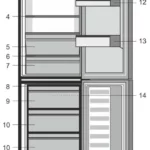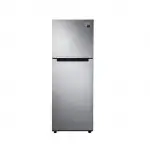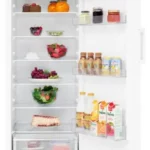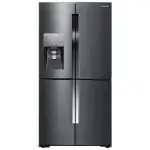
Beko Refrigerator User Manual
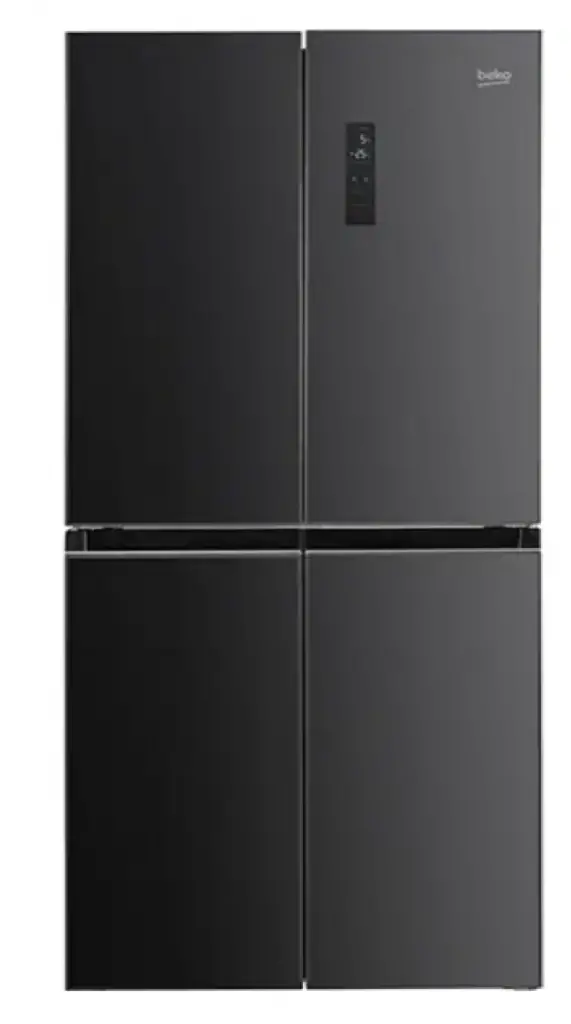
GNO4031GS
 Safety information
Safety information
In the interest of your safety and to ensure the correct use, before installing and first using the appliance, read this user manual carefully, including its hints and warnings. To avoid unnecessary mistakes and accidents, it is important to ensure that all people using the appliance are thoroughly familiar with its operation and safety features. Save these instructions and make sure that they remain with the appliance if it is moved or sold, so that everyone using it through its life will be properly informed on appliance use and safety.
For the safety of life and property keep the precautions of these user’s instructions as the manufacturer is not responsible for damages caused by omission.
Children and vulnerable people safety
- This appliance can be used by children aged from 8 years and above and persons with reduced physical, sensory or mental capabilities or lack of experience and knowledge if they have been given super vision or instruction concerning use of the appliance in a safe way and understand the hazards
- Children aged from 3 to 8 years are allowed to lead and unload this appliance.
- Children should be supervised to ensure allowed to load and unload this that they do not play with the appliance.
- Cleaning and user maintenance shall not be made by children unless they are aged from 8 years and above and
- Keep all packaging well away from There is risk of suffocation.
- If you are discarding the appliance pull the plug out of the socket, cut the connection cable (as close to the appliance as you can) and remove the door to prevent play ng children from suffer ng a electr c shock or closing themselves in it.
- If this appliance featuring magnetic door seals is to replace an older appliance having a spring lock (latch) on the door or lid, be sure to make that spring lock unusable before you discard the old appliance This will prevent it from becoming dangerous for a child.
General safety
WARN I NG! Keep ventilation openings, in the appliance enclosure or in the built-in structure, clear of obstruction.
 WARN I NG! Do not use mechanical devices or other means to accelerate the defrosting process, other than those recommended by the manufacturer.
WARN I NG! Do not use mechanical devices or other means to accelerate the defrosting process, other than those recommended by the manufacturer.
 WARNING! Do not damage the refrigerant circuit.
WARNING! Do not damage the refrigerant circuit.
 WARNI NG! Do not use other electrical appliances (such as ice cream makers) inside of refrigerating appliances, unless they are approved for this purpose by the manufacture.
WARNI NG! Do not use other electrical appliances (such as ice cream makers) inside of refrigerating appliances, unless they are approved for this purpose by the manufacture.
 WARNI NG! Do not touch the light bulb if it has been on for a long period of time because it could be very hot.’!
WARNI NG! Do not touch the light bulb if it has been on for a long period of time because it could be very hot.’!
 WARNI NG! When positioning the appliance, ensure the supply cord is not trapped or damaged.
WARNI NG! When positioning the appliance, ensure the supply cord is not trapped or damaged.
 WARNI NG! Do not locate multiple portable socket-outlets or portable power supplies at the rear of the appliance.
WARNI NG! Do not locate multiple portable socket-outlets or portable power supplies at the rear of the appliance.
- Do not store explosive substances such as aerosol cans with a flammable propellant in this
- The refrigerant isobutane (R-600a) is contained within the refrigerant circuit of the appliance, a natural gas with a high level of environmental compatibility, which is nevertheless
- During transportation and installation of the appliance, be certain that none of the components of the refrigerant circuit become
- avoid open flames and sources of ignition
- thoroughly ventilate the room in which the appliance is situated
- It is dangerous to alter the specifications or modify this product in any Any damage to the cord may cause a short circuit, fire and/or electric shock.
- This appliance is intended to be used in household and similar applications such as
- staff kitchen areas in shops, offices and other working environments;
- farm houses and by clients in hotels, motels and other residential type environments;
- bed and breakfast type environments;
- catering and similar non-retail
 WARNING! Any electrical components(plug, power cord, compressor and etc.) must be replaced by a certified service agent or qualified service personnel.
WARNING! Any electrical components(plug, power cord, compressor and etc.) must be replaced by a certified service agent or qualified service personnel.
 WARNING! The light bulb supplied with this appliance is a “special use lamp bulb” usable only with the appliance supplied. This “special use lamp” is not usable for domestic lighting.1’
WARNING! The light bulb supplied with this appliance is a “special use lamp bulb” usable only with the appliance supplied. This “special use lamp” is not usable for domestic lighting.1’
- Power cord must not be
- Make sure that the power plug is not squashed or damaged by the back of the A squashed or damaged power plug may overheat and cause a fire.
- Make sure that the mains plug of the appliance is
- Do not pull the mains
- If the power plug socket is loose, do not insert the power There is a risk of electric shock or fire.
- You must not operate the appliance without the
- This appliance is Care should be taken when moving it.
- Do not remove nor touch items from the freezer compartment if you hands are damp/wet, as this could cause skin abrasions or frost/freezer
- Avoid prolonged exposure of the appliance to direct
Daily use
- Do not put hot objects on the plastic parts in the
- Do not place food products directly against the rear
- Frozen food must not be re-frozen once it has been thawed ’
- Store pre-packed frozen food in accordance with the frozen food manufacturer’s instructions”
- Manufacturer’s storage recommendations should be strictly adhered Refer to relevant instructions.
- Do not place carbonated of fizzy drinks in the freezer compartment as it creates pressure on the container, which may cause it to explode, resulting in damage to the
- Ice lollies can cause frost burns if consumed straight from the appliance.
To avoid contamination of food, please respect the following instructions
- Opening the door for long periods can cause a significant increase of the temperature in the compartments of the
- Clean regularly surfaces that can come in contact with food and accessible drainage systems.
- Clean water tanks if they have not been used for 48h; flush the water system connected to a water supply if water has not been drawn for 5
- Store raw meat and fish in suitable containers in the refrigerator, so that it is not in contact with other food.
- Two-star frozen-food compartments(if they are presented in the appliance) are suitable for storing pre-frozen food, storing or making ice-cream and making ice cubes.
- one, two and three star compartments &if they are presented in the appliance’ are not suitable for the freezing of fresh
- lf the appliance is left empty for long periods, switch off, defrost, clean, dry and leave the door open to prevent mount developing within the
Care and cleaning
- Before maintenance, switch off the appliance and disconnect the mains plug from the mains socket.
- Do not clean the appliance with metal object
- Do not use sharp objects to remove frost from the appliance. plastic scraper.’
Regularly examine the drain in the refrigerator for defrosted water. lf necessary, clean the drain. lf the drain is blocked, water will collect in te bottom of the appliance.2 ‘
Installation
important! For electrical connection carefully follow the instructions given in specific paragraphs.
- Unpack the appliance and check if there are damages on )o not connect the appliance if it is damaged. Report possible damages immediately to the place you bought it. ln that case retain packing.
- It is advisable to wait at least four hours before connecting the appliance to allow the oil to flow back in the
- Ade1uate air circulation should be around the appliance, lacking this leads to To achieve sufficient ventilation follow the instructions relevant to installation.
- Wherever possible the spacers of the product should be against a wall to avoid touching or catching warm parts &compressor, con( denser’ to prevent possible
- The appliance must not be located close to radiators or
- Make sure that the mains plug is accessible after the installation of the
Service
- Any electrical work re1uired to do the servicing of the appliance should be carried out by a 1ualified electrician or competent
- This product must be serviced by an authorized Service Center, and only genuine spare parts must be
Energy saving
- Don’t put hot food in the appliance0
- Don’t pack food close together as this prevents air circulating
- Make sure food don’t touch the back of the compartments
- If electricity goes off, don’t open the door(s);
- Don’t open the door(s) frequently;
- Don’t keep the door(s) open for too long time;
- Don’t set the thermostat on exceeding cold temperatures;
- All accessories, such as drawers, shelves balconies, should be kept there for lower energy consumption
Environment Protection
 This appliance does not contain gasses which could damage the ozone Layer, in either its refrigerant circuit or insulation materials. The appliance shall not be discarded together with the urban refuse and rubbish. The insulation foam contains flammable gases: the appliance shall be disposed according to the appliance regulations to obtain from your local authorities. Avoid damaging the cooling unit, especially the heat exchanger. The materials used on this appliance marked by the symbol are recyclable.
This appliance does not contain gasses which could damage the ozone Layer, in either its refrigerant circuit or insulation materials. The appliance shall not be discarded together with the urban refuse and rubbish. The insulation foam contains flammable gases: the appliance shall be disposed according to the appliance regulations to obtain from your local authorities. Avoid damaging the cooling unit, especially the heat exchanger. The materials used on this appliance marked by the symbol are recyclable.
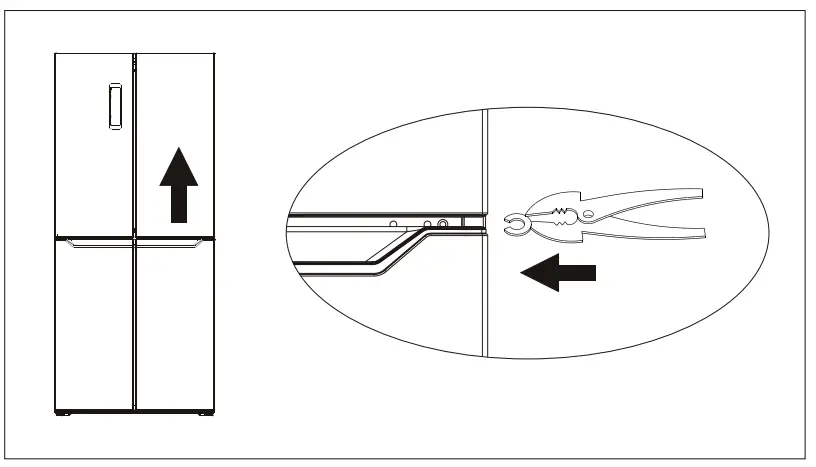 The symbol on the product or on its packaging indicates that this product may not be treated as household waste. Instead it should be taken to the appropriate collection point for the recycling of electrical and electronic equipment. By ensuring this product is disposed of correctly, you will help prevent potential negative consequences for the environment and human health, which could otherwise be caused by inappropriate waste handling of this product. For more detailed information about recycling of this product, please contact your local council, your house h old waste disposal service or the shop where you purchased the product.
The symbol on the product or on its packaging indicates that this product may not be treated as household waste. Instead it should be taken to the appropriate collection point for the recycling of electrical and electronic equipment. By ensuring this product is disposed of correctly, you will help prevent potential negative consequences for the environment and human health, which could otherwise be caused by inappropriate waste handling of this product. For more detailed information about recycling of this product, please contact your local council, your house h old waste disposal service or the shop where you purchased the product.
Packaging materials
The materials with the symbol are recyclable. Dispose the packaging in a suitable collection containers to recycle it.
Disposal of the appliance
- Disconnect the mains plug from the mains
- Cut off the mains cable and discard
WARN ING! During using, service and disposal the appliance, please pay attention to symbol as left side, which is located on rear of appliance (rear panel or compressor.
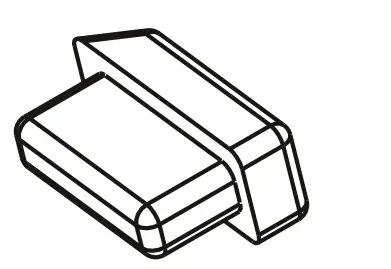
It’s risk of fire warning symbol. There are flammable materials in refrigerant pipes an d compressor.
Please be far away fire source durin g using, service and disposal.
Overview
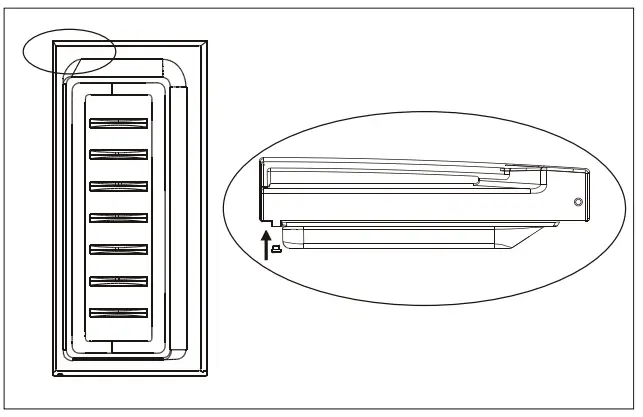
Note: Above picture is for reference only. Real appliance probably is different.
Installation
Space Requirement
- Select a location without exposure to sunlight;
- Select a location with enough space for the refrigerator doors to open easily;
- Select a location with level (or nearly level) flooring;
- Allow sufficient space to install the refrigerator on a flat surface;
- Allow clearance to the right, left, back and top when installing. this will help reduce power consumption and keep your energy bills lower

Levelling and anchor the refrigerator
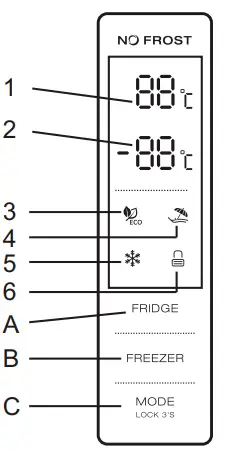

Level doors
After transportation or door balconies are loaded by food or beverage, upper two doors may not be aligned. There are 3 C type washers which are used to adjust doors. Please follow below process to level doors.

- Before check alignment of doors, please make sure appliance stand levelly .
- If top of upper two doors looks not in a line, please slightly lift lower door and insert a pieces of C type was her by a clip between bottom of door and middle hinge.

 WARNING! Please be careful to avoid fingers are clipped by door. Please use tool.
WARNING! Please be careful to avoid fingers are clipped by door. Please use tool.
 WARNING! Please keep C type washers far away children to avoid them are swallowed by children. They are small parts.
WARNING! Please keep C type washers far away children to avoid them are swallowed by children. They are small parts.
Rubber blocks
There is one rubber block on each door. they fuction as spring to relieve impact when door closes.

Please not pull the rubber blocks. if they absent from the door, please take one from accessory bag and insert it to the hole of door.
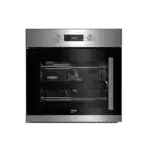
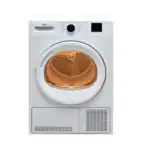
 WARNING! Please keep rubber blocks far away children to aboid them are swallowed by children. they are small parts.
WARNING! Please keep rubber blocks far away children to aboid them are swallowed by children. they are small parts.
Positioning
Install this appliance at a location where the ambient temperature corresponds to the climate class indicated on the rating plate of the appliance: for refrigerating appliances with climate class:
- extended temperate: this refrigerating appliance is intended to be used at ambient temperatures ranging from 10 °C to 32 °C; (SN)
- temperate: this refrigerating appliance is intended to be used at ambient temperatures ranging from 16 °C to 32 °C;(N)
- subtropical: this refrigerating appliance is intended to be used at ambient temperatures ranging from 16 °C to 38 °C;(ST)
- tropical: this refrigerating appliance is intended to be used at ambient temperatures ranging from 16 °C to 43
Location
The appliance should be installed well away from sources of heat such as radiators, boilers, direct sunlight etc. Ensure that air can circulate freely around the back of the cabinet. To ensure best performance, if the appliance is positioned below an overhanging wall unit, the minimum distance between the top of the cabi-net and the wall unit must be at least 100 mm. Ideally, however, the appliance should not be positioned below overhanging wall units. Accurate leveling is ensured by one or more adjustable feet at the base of the cabinet.
This refrigerating appliance is not intended to be used as a built-in appliance;
 Warning! It must be possible to disconnect the appliance from the mains power supply; the plug must therefore be easily accessible after installation.
Warning! It must be possible to disconnect the appliance from the mains power supply; the plug must therefore be easily accessible after installation.
Electrical connection
Before plugging in, ensure that the voltage and frequency shown on the rating plate correspond to your domestic power supply. The appliance must be earthed. The power supply cable plug is provided with a contact for this purpose. If the domestic power supply socket is not earthed, connect the appliance to a separate earth in compliance with current regulations, consulting a qualified electrician. The manufacturer declines all responsibility if the above safety precautions are not observed. This appliance complies with the E.E.C. Directives.
Daily Use
Using the control Panel
- KEY OPERATION
A.Temperature Control of Fridge Compartment B.Temperature Control of Freezer Compartment C.Mode/ Locking / Unlocking - LED DISPLAY
1.Temperature of Fridge Comparment 2.Temperature of Freezer Comparment 3.ECO Mode 4.Holiday Mode 5.Super Mode 6.Locking / Unlocking
OPERATING CONDITION
- The control panel is 100% lit up for 3 seconds, which operates exactly as per the setting (mode and temperature) before the poweroff. The system will be automatically locked 25 seconds after the last key operation. After locking, the light of the panel would be out 120 seconds after the last key operation.
- Both preset temperatures of fridge compartment and freezer compartment would be shown on the display
- DISPLAY
- The panel will be lit up for 2 minutes once the door of fridge compartment or freezer compartment is opened. (one door signal is sensed at a time)
- The panel will be lit up by any key operation whereas the light would be out 2 minutes after the last operation.
- Display during normal operation Temperature Display of the Fridge Compartment: Indicating the temperature of the current setting. Temperature Display of the Freezer Compartment: Indicating the temperature of the current setting.
ILLUSTION OF THE KEY
Temperature Control of the Fridge Compartment
-
- Temperature Control of the Fridge Compartment: This key is workable both in User Defined Mode as well as Super Mode. After entering the temperature control of the fridge compartment, this key flashes. By touching the key consecutively, the temperature would change in a circle of “2C, 3C, 4C, 5C, 6C, 7C, 8C, OFF”, after which 5-second flashing means the selection of temperature is settled.
- Shutoff of the Fridge Compartment: Press the key of “Temperature Control of Fridge Compartment”, choose “OFF”, a 5-second flashing means the selection of temperature is made, namely the fridge compartment would stop refrigeration.
Temperature Control of the Freezer Compartment
Temperature Control of the Freezer Compartment: This key is workable both in User Defined Mode as well as Holiday Mode. After entering the temperature control of the freezer compartment, the key flashes. By touching the key consecutively, the temperature would change in a circle from -14 C to -22C, after which a 5-second flashing means the selection of temperature is settled.
Model Locking / Unlocking
- By touching this key consecutively, the operation mode of the refrigerator will change in a circle of “ECO Mode-Holiday Mode-Super Mode-User Defined Mode. a 5-second flashing means the selection of temperature is settled.
- Long Press to Enter / Exit Locking Mode Unlocking: Press for 3 seconds in the mode of locking, all the keys would be unlocked after the a beep. Locking: Press for 3 seconds in the mode of unlocking, all the keys would be locked after the a beep.
Press Button
Short beep after per press button All buttons will only valid under unlock mode.
Lock Function
No operation in 25 sec will lock the display automatically.
ECO mode
Press mode to choose ECO mode, ECO icon keeps bright after 5 sec flashing. 5°in fridge compartment and -18°in freezer compartment under eco mode, “Freezer”&”Fridge” button in vain while eco icon will flash three times in alarm. Exit eco mode Press mode again to exit eco mode after 5 sec, entering the selected mode.
Holiday Mode
Press mode to choose Holiday Mode, the icon keeps bright after 5 sec flashing, entering holiday mode. Temperature fix 17°in fridge compartment, “fridge” button in vain, while holiday icon will flash three times in alarm. Exit holiday mode: choose mode, exit holiday mode after 5 sec, entering the selected mode.
Super Freezing mode Choose mode, icon keeps bright after 5 sec flashing, entering freezing mode. Freezing mode: Temperature nonadjustable in freezing compartment, “freezer” button in vain, while freezing icon will flash three times in alarm. Exit freezing mode: meeting below conditions. -manually exit freezing mode -freezing period more than 50 hours
Mode remains the same before entering super freezing mode.
First use
Cleaning the interior
Before using the appliance for the first time, wash the interior and all internal accessories with lukewarm water and some neutral soap so as to remove the typical smell of a brand new product, then dry thoroughly.
Important! Do not use detergents or abrasive powders, as these will damage the finish.
Daily use
| Food | Location |
| Eggs | Door rack |
| Dairy products (butter, cheese) | If available, biofresh or chiller compartment Lowest shelves |
| Fruits, vegetables and salad | Fruit and vegetable box, crisper or EverFresh+ compartment (if available) |
| Fresh meat, poultry, fresh fish, sausages, cooked foods | If available, biofresh or chiller compartment Lowest shelf |
| Ready to eat foods, packaged products, canned foods, pickled products | Upper shelves or door rack |
| Drinks, bottles, condiments, snacks | Door rack |
| Leftovers | Middle shelves |
Storing fresh food
Storing into the fresh food compartment:
- Keep your fridge at recommended temperature level as 4°C.
- Food to be stored should be properly sealed to avoid odour or taste
- Do not store excessive quantities of food inside your Leave spaces between foods to allow cold air flowing around them to achieve a better and more homogeneous cooling.
- To allow shorter door openings, foods eaten daily should be stored at the front of the front of the shelf.
- Leave a gap between foods and the inner walls, allowing air to flow. If you store foods against the rear wall foods could freeze against rear wall.
- Hot, cooked food must be cooled down at room temperature before storing in the appliance. Then, warm food can be stored in the lower shelves of your fridge. Please do not put warm food nearby highly perishable foods. Thaw your frozen food in the fresh food This way, you can use the frozen food to cool down the fresh food compartment and save energy.
- If unripe tropical fruits (mango, melons, papaya, banana, pineapple) are stored in refrigerator, ageing process can be accelerated and it is not advisable since it causes shorter storage times. However, the ripening of strongly green fruits (apple, pear) can be promoted for a certain period in fridge compartment.
- Onions, garlic, ginger and other root vegetables should be stored at dark and cool room conditions, not in the fridge.
- When a spoiled food inside refrigerator is realized, it should be disposed. When rotten food is noticed, please clean inner liner or accessories which were in contact to prevent contamination.
- Large pots of food, such as soups or stews can be divided into shallow containers to quickly cool in the Large pieces of cooked meat and whole poultry should be divided into smaller pieces for the same purpose.
- Do not store unpacked foods near by eggs
- Keep fruits and vegetables separate and store like with like: apples with apples, carrots with Fruits and vegetables give off different gases that can cause others to deteriorate.
- Take leafy greens out of plastic bags, wrap them in a paper towel or tea towel before stored in Do not forget to dry them if they are rinsed or wet before storing.
- Store fruits and vegetables susceptible to drying out in perforated or unsealed plastic bags to maintain a moist environment yet still allow air to circulate
- Different foods should be placed in different areas according to their properties:
“Please check appropriate Climate Class of your appliance rated on the rating plate. One of below information is valid for your appliance according to rated Climate Class.”
- SN: Extended Temperate: This refrigerating appliance is intended to be used at ambient temperatures ranging from 10°C to 32°C
- N: Temperate: This refrigerating appliance is intended to be used at ambient temperatures ranging from 16°C to 32°C
- ST: Subtropical: This refrigerating appliance is intended to be used at ambient temperatures ranging from 16°C to 38°C
- T: Tropical: This refrigerating appliance is intended to be used at ambient temperatures ranging from 16°C to 43°C
Storing into the freezer compartment:
- It is recommended to keep freezer setting at -20°C except extreme ambient conditions.
- 4-6 hours before freezing switch on the Fast Freeze function to provide faster
- Hot food must be cooled to room temperature before storing in the freezer
- Food cut into small portions will freeze faster and be easier to defrost and be easier to defrost and cook
- It is better to pack food before putting it into the freezer
- In order to avoid expiry of storage periods, please note the freezing date, time limit and name of the food on the packaging according to the storage periods of different
- Do not exceed the food storage times recommended by the food Only take the required amount of food out of the freezer.
- Consume defrosted food Defrosted food cannot be re-frozen unless it is cooked. It is not safe to consume uncooked re-frozen fresh food.
- When freezing fresh food, avoid bringing it in contact with already frozen It may cause thawing of already frozen pieces.
When storing commercially frozen foods, please follow these guidelines:
Always follow manufacturers’ guidelines for the length of time you should store the food for. Do not exceed these guidelines!
- Try to keep the length of time between purchase and storage as short as possible to preserve food quality.
- Buy frozen foods, which have been stored at a temperature of –18 °C or
- Avoid buying food which has ice or frost on the packaging – This indicates that the products might have been partially defrosted and refrozen at some point – temperature rises affect the quality of food.
- We recommend a temperature setting of 4°C for fresh food compartment and -20°C for freezer compartment to achieve better food
preservation. - With the exception of extreme conditions in ambient, if temperature is set to recommended values as +4°C/-20°C, overall freshness will be prolonged within fresh food and freezer compartments. If temperature of fresh food compartment is set to cooler, fresh fruits and vegetables may be partially frozen or exposed to cold injury, while warmer temperature level may cause faster spoilage of highly perishable foods (dairy products, meat products).
Temperature setting recommendation
| Temperature Setting Recommendation | ||
| Environment Temperature | Temperature Setting | |
|
Summer ( Above 38°C ) |
 |
Fridge set on 4°C |
|
Freezer set on -18°C |
||
|
Normal |
Fridge set on 4°C |
|
|
Freezer set on -18°C |
||
|
Winter ( Below 16°C) |
Fridge set on 4°C |
|
|
Freezer set on -18°C |
||
- Information above give users recommendation of temperature
Impact on Food Storage
- Under Recommended setting, the best storage time of fridge is no more than 3
- Under Recommended setting, the best storage time of freezer is no more than 1 month.
- The best storage time may reduce under other settings.
Fresh Zone Temperature Control
- Temperature of the fresh zone can be adjusted according to the type of storage food.
- Push the knob upward from the bottom, temperature in the fresh zone will be gradually decreased.
- When the knob is placed at the “CRISPER” position, the fresh zone can be functioned as a crisper zone and maintain the appropriate temperature and humidity for fruits and vegetable.
- When the knob is placed at the ” CHILLER” position, it is suitable for short-term storage of fish or other fresh food. The food will keep fresh but not frozen which makes it the best choice for storing fresh food.
- Tips: When you choose ” CHILLER” function, it is recommended to set the refrigerator temperature below 4°C . and preserved lead-time no more than 3 days , in order to keep the best freshness.

Humidity Adjustment for Crisper Zone
- When the knob is placed at the “HIGH” position, the crisper humidity is high, which is suitable for
- When the key is placed at the “LOW” position, humidity in the crisper is lower with is suitable for fruits.

Freezing fresh food
- The freezer compartment is suitable for freezing fresh food and storing frozen and deep-frozen food for a long
- Place the fresh food to be frozen in the bottom
- The maximum amount of food that can be frozen in 24 hours is specified on the rating
- The freezing process lasts 24 hours: during this period do not add other food to be
Storing frozen food
When first starting-up or after a period out of use. Before putting the product in the compartment let the appliance run at least 2 hours on the higher settings.
Important! In the event of accidental defrosting, for example the power has been off for longer than the value shown in the technical characteristics chart under “rising time”, the defrosted food must be consumed quickly or cooked immediately and then re-frozen (after cooked).
Thawing
Deep-frozen or frozen food, prior to be used, can be thawed in the freezer compartment or at room temperature, depending on the time available for this operation.
Small pieces may even be cooked still frozen, directly from the freezer. In this case, cooking will take longer.
Accessories Available shelves
The walls of the refrigerator are e/uipped with a series of runners so that the shelves can be positioned as desired.
Positioning the door balconies
To permit storage of food packages of various sizes, the door balconies can be placed at different heights. To make these ad4ustments proceed as follows) gradually pull the balcony in the direction of the arrows until it comes free, then reposition as re/uired.

Helpful hints and tips
Hints for freezing
To help you make the most of the freezing process, here are some important hints:
- the maximum quantity of food which can be frozen in 24 is shown on the rating plate;
- the freezing process takes 24 No further food to be frozen should be added during this period;
- only freeze top quality, fresh and thoroughly cleaned, foodstuffs;
- prepare food in small portions to enable it to be rapidly and completely frozen and to make it possible subsequently to thaw only the quantity required;
- wrap up the food in aluminium foil or polythene and make sure that the packages are airtight;
- do not allow fresh, unfrozen food to touch food which is already frozen, thus avoiding a rise in temperature of the latter;
- lean foods store better and longer than fatty ones; salt reduces the storage life of food;
- water ices, if consumed immediately after removal from the freezer compartment, can possibly cause the skin to be freeze burnt;
- it is advisable to show the freezing in date on each individual pack to enable you removal from the freezer compartment, can possibly cause the skin to be freeze burnt;
- it is advisable to show the freezing in date on each individual pack to enable you to keep tab of the storage
Hints for storage of frozen food
To obtain the best performance from this appliance, you should:
make sure that the commercially frozen foodstuffs were adequately stored by the retailer; be sure that frozen foodstuffs are transferred from the food store to the freezer in the shortest possible time;
not open the door frequently or leave it open longer than absolutely necessary. Once defrosted, food deteriorates rapidly and cannot be refrozen.
Do not exceed the storage period indicated by the food manufacture.
Hints for fresh food refrigeration
To obtain the best performance:
- Do not store warm food or evaporating liquids in the refrigerator
- Do cover or wrap the food, particularly if it has a strong flavour
Hints for refrigeration
Useful hints:
- Make (all types): wrap in polythene bags and place on the glass shelves above the vegetable drawer.
- For safety, store in this way only one or two days at the most.
- Cooked foods, cold dishes, etc…: these should be covered and may be placed on any shelf.
- Fruit and vegetables: these should be thoroughly cleaned and placed in the special drawer(s) provided.
- Butter and cheese: these should be placed in special airtight containers or wrapped in aluminum foil or polythene bags to exclude as much air as possible.
- Milk bottle: these should have a cap and should be stored in the balconies on the door. Bananas, potatoes, onions and garlic, if not packed, must not be kept in the fridge.
Cleaning
For hygienic reasons the appliance interior, including interior accessories, should be cleaned regularly.
Caution! The appliance may not be connected to the mains during cleaning. Danger of electrical shock! Before cleaning switch the appliance off and remove the plug from the mains, or switch off or turn out the circuit breaker or fuse. Never clean the appliance with a steam cleaner. Moisture could accumulate in electrical components, danger of electrical shock! Hot vapors can lead to the damage of plastic parts. The appliance must be dry before it is placed back into service.
Important!
Ethereal oils and organic solvents can damage plastic parts. e.g. lemon juice or the juice form orange peel. butyric acid, cleanser that contain acetic acid.
- Do not allow such substances to come into contact the appliance parts.
- Do not use any abrasive cleaners
- Remove the food from the freezer. Store them in a cool place, well covered.
- Switch the appliance off and remove the plug from the mains, or switch off or turn out the circuit breaker of fuse.
- Clean the appliance and the interior accessories with a cloth and lukewarm water. After cleaning wipe with fresh water and rub dry.
- After everything is dry place appliance back into service.
Troubleshooting
Caution! Before troubleshooting, disconnect the power supply. Only a qualified electrician or competent person must do the troubleshooting that is not in this manual.
Important! There are some sounds during normal use (compressor, refrigerant circulation).
| Problem | Possible cause | Solution |
| Appliance does not work | Mains plug is not plugged In or is loose | Insert mains plug. |
| Fuse has blown or is defective | Check fuse, replace if necessary. | |
| Socket is defective | Mains malfunctions are to be corrected by an electrician. | |
| Appliance freezes or cools too much | Temperature is set too cold or the appliance runs at SUPER modes. | Turn the temperature regulation to a warmer setting temporarily. |
| The food is not frozen enough. | Temperature Is not properly adjusted. | Please look in the initial Temperature Setting section. |
| Door was open for an extended period. | Open the door only as long as necessary. | |
| A large quantity of warm food was placed in the appliance within the last 24 hours. | Turn the temperature regulation to a colder setting temporarily. | |
| The appliance is near a heat source. | Please look in the installation location section. | |
| Heavy build up of frost on the door seal. | Door seal is not air tight. | Carefully warm the leaking sections of the door seal with a hair dryer (on a cool setting). At the same time shape the warmed door seal by hand such that it sits correctly |
| Unusual noises | Appliance Is not level | Re-adjust the feet |
| The appliance is touching the wall or other objects. | Move the appliance slightly. | |
| A component, e.g. a pipe, on the rear of the appliance Is touching another part of the appliance or the wall. | If necessary, carefully bend the component out of the way. | |
| Water on the floor | Water drain hole is blocked. | See the Cleaning and Care section. |
If the malfunction shows again, contact the Service Center.
These data are necessary to help you quickly and correctly. Write the necessary data here, refer to the rating plate.
WARNING
Some (simple) failures can be adequately handled by the end-user without any safety issue or unsafe use arising, provided that they are carried out within the limits and in accordance with the following instructions (see the “Self-Repair” section).
Therefore, unless otherwise authorized in the “Self-Repair” section below, repairs shall be addressed to registered professional repairers in order to avoid safety issues. A registered professional repairer is a professional repairer that has been granted access to the instructions and spare parts list of this product by the manufacturer according to the methods described in legislative acts pursuant to Directive 2009/125/EC. However, only the service agent (i.e. authorized professional repairers) that you can reach through the phone number given in the user manual/warranty card or through your authorized dealer may provide service under the guarantee terms. Therefore, please be advised that repairs by professional repairers (who are not authorized by Beko) shall void the guarantee.
Self-Repair
Self-repair can be done by the end-user with regard to the following spare parts: door handles, door hinges, trays, baskets and door gaskets (an updated list is also available in support.beko.com as of 1st March 2021) Moreover, to ensure product safety and to prevent risk of serious injury, the mentioned selfrepair shall be done following the instructions in the user manual for self-repair or which are available in support.beko.com. For your safety, unplug the product before attempting any selfrepair. Repair and repair attempts by end-users for parts not included in such list and/or not following the instructions in the user manuals for self-repair or which are available in support.beko.com, might give raise to safety issues not attributable to Beko, and will void the warranty of the product.
Therefore, it is highly recommended that end users refrain from the attempt to carry out repairs falling outside the mentioned list of spare parts, contacting in such cases authorized professional repairers or registered professional repairers. On the contrary, such attempts by end-users may cause safety issues and damage the product and subsequently cause fire, flood, electrocution and serious personal injury to occur.
By way of example, but not limited to, the following repairs must be addressed to authorized professional repairers or registered professional repairers: compressor, cooling circuit, main board, inverter board, display board, etc.
The manufacturer/seller cannot be held liable in any case where end-users do not comply with the above.
The spare part availability of the refrigerator that you purchased is 10 years. During this period, original spare parts will be available to operate the refrigerator properly.
The minimum duration of guarantee of the refrigerator that you purchased is 24 months.
